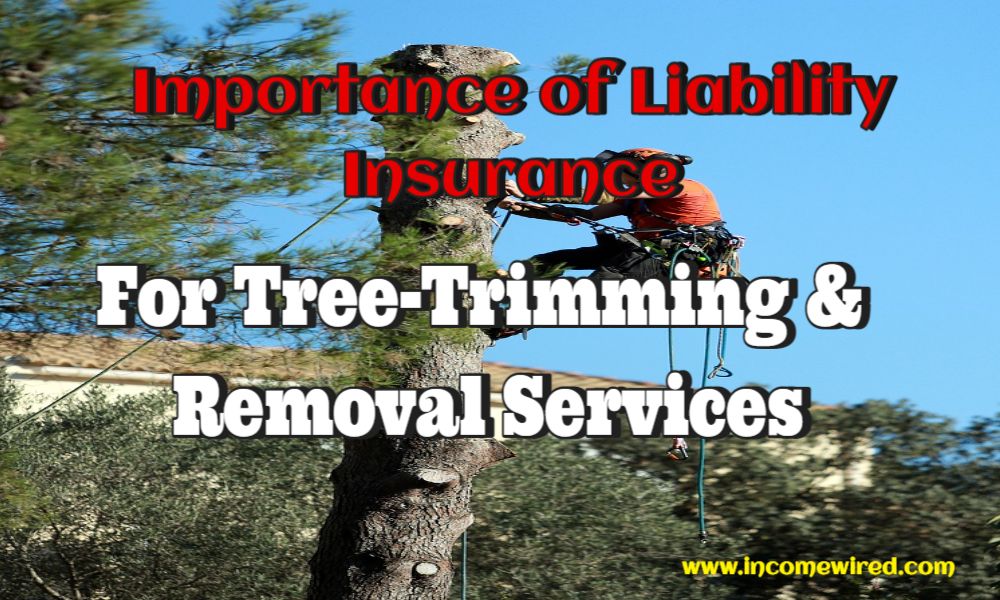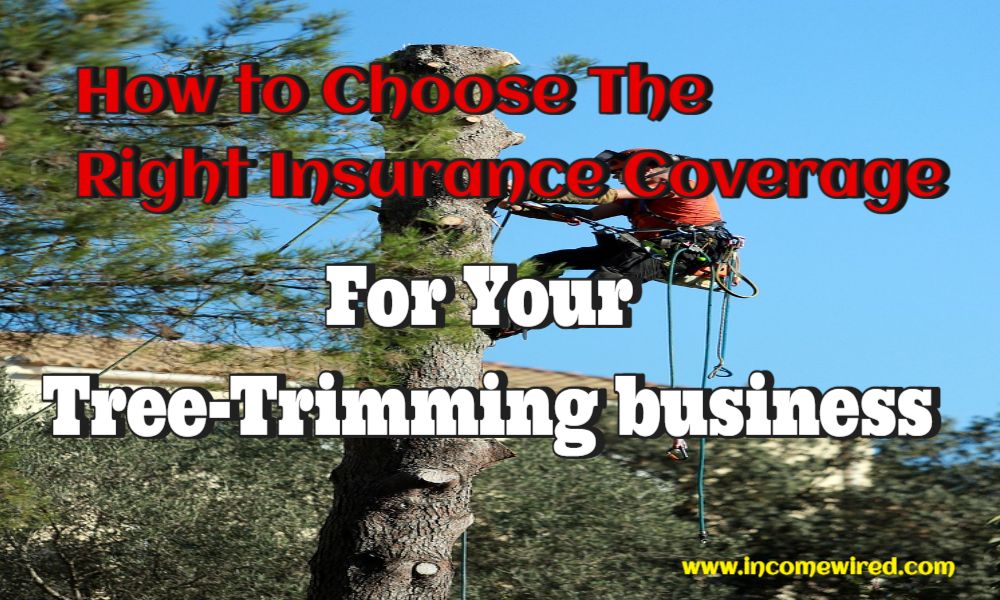we help service-based business owners, freelancers, and aspiring businesses with our content & services & When readers purchase services discussed on our site, we often earn affiliate commissions that support our work. Find out more about Income Wired
Insurance is a critical aspect of running a tree trimming and removal service business. Not only does it provide financial protection in case of accidents or damage, but it also helps to reduce legal and financial risks associated with running a business. When choosing an insurance policy for your tree trimming business, it’s essential to understand what to look for and what types of coverage are available. In this report, we’ll explore the key elements of a comprehensive insurance policy for your tree-trimming business.
Liability Coverage:
Liability coverage is one of the most important types of insurance for a tree-trimming business. This coverage protects the business from financial losses in the event of property damage, personal injury, or environmental damage caused by the business’s operations. Liability coverage should be sufficient enough to cover the cost of any legal fees, settlements, or judgments that may result from a lawsuit. It’s also essential to consider the limits of liability coverage and ensure that they are adequate for your business’s needs.
Workers’ Compensation Coverage:
Workers’ compensation coverage is another critical type of insurance for a tree-trimming business. This coverage provides financial protection in case a worker is injured or becomes ill as a result of performing their job duties. Workers’ compensation insurance covers medical expenses, lost wages, and rehabilitation costs for injured workers. It also helps to reduce the financial risk for the business in case of a lawsuit resulting from a workplace injury.
Equipment Coverage:
Equipment coverage is an important type of insurance for a tree-trimming business. This coverage protects the business’s valuable equipment and tools, such as chainsaws, ladders, and trucks. Equipment coverage should cover the cost of repairing or replacing damaged or lost equipment, as well as any loss of income due to equipment downtime. It’s important to consider the value of the equipment and ensure that the insurance policy provides adequate coverage.
Vehicle Coverage:
Vehicle coverage is a necessary type of insurance for a tree-trimming business that uses vehicles for its operations. This coverage protects the business’s vehicles, such as trucks, in the event of an accident or theft. Vehicle coverage should include liability coverage for property damage and personal injury, as well as collision coverage for repairs to the business’s vehicles. It’s important to consider the value of the vehicles and ensure that the insurance policy provides adequate coverage.
Business Interruption Coverage:
Business interruption coverage is an important type of insurance for a tree-trimming business. This coverage provides financial protection in the event of a business interruption due to an unforeseen event, such as a natural disaster. Business interruption coverage covers the loss of income and additional expenses incurred as a result of the interruption. It’s important to consider the potential financial impact of a business interruption and ensure that the insurance policy provides adequate coverage.
In addition to ensuring that your insurance policy provides adequate coverage, it’s also important to implement safety measures to minimize the risks involved in tree trimming and removal services. These measures include:
Proper Training:
It’s important to provide thorough training to your workers to ensure that they understand the proper techniques and safety procedures for tree trimming and removal. This training should include proper use of equipment, identification of hazardous trees, and proper techniques for working at heights.
Use of Protective Gear:
Protective gear, such as hard hats, gloves, and safety glasses, should be worn at all times when performing tree trimming and removal services. This gear can help to protect workers from injuries and reduce the risk of damage to property or the environment.
Regular Equipment Maintenance:
Regular maintenance of equipment is important to ensure that it is in good working condition and to minimize the risk of equipment failure. Equipment should be checked regularly for any signs of wear and tear and should be repaired or replaced as necessary.
Careful Planning:
Careful planning is important to minimize the risks involved in tree trimming and removal services. This includes selecting the proper equipment for the job, considering the size and condition of the tree, and determining the best approach for removing the tree safely.
By implementing safety measures and choosing a comprehensive insurance policy, you can help to minimize the risks involved in tree trimming and removal services and provide peace of mind for your business.
Tips for Finding the Best Insurance Policy for Your Tree Trimming Business:
Determine your insurance needs: Before you start shopping for insurance, it’s important to understand the types of coverage that your business requires. Consider the risks associated with tree trimming and removal services and what types of insurance will provide adequate protection.
- Shop around: Don’t just settle for the first insurance policy that you find. Shop around and compare coverage and pricing from different insurance companies to find the best policy for your business.
- Look for a company with experience in the tree trimming industry: An insurance company with experience in the tree trimming industry will have a better understanding of the specific risks involved and can provide more tailored coverage.
- Consider the policy limits: Make sure that the policy limits are adequate for your business needs. Consider the value of your equipment, the cost of potential damages, and any other costs associated with tree trimming and removal services.
- Read the fine print: Before you sign an insurance policy, make sure that you fully understand the coverage and limitations. Read the fine print and ask questions about any unclear points.
- Check the financial stability of the insurance company: Make sure that the insurance company you choose is financially stable and has a good reputation. Look for companies that have a history of paying claims promptly and fairly.
- Consider endorsements and add-ons: Consider purchasing endorsements or add-ons to your insurance policy to provide additional coverage. For example, you may want to add coverage for injuries to your employees or damage to third-party property.
- Review your policy regularly: Regularly review your insurance policy to make sure that it still meets your business needs. Consider making changes to your coverage if your business grows or changes in any way.
In conclusion, insurance is a critical aspect of running a tree trimming and removal service business. It provides financial protection in case of accidents or damage, helps to reduce legal and financial risks, and provides peace of mind for your business. When choosing an insurance policy, it’s important to understand what to look for and what types of coverage are available, and to implement safety measures to minimize the risks involved in tree trimming and removal services. With the right insurance policy and safety measures in place, you can help to protect your business and provide a safe and successful service to your customers.



